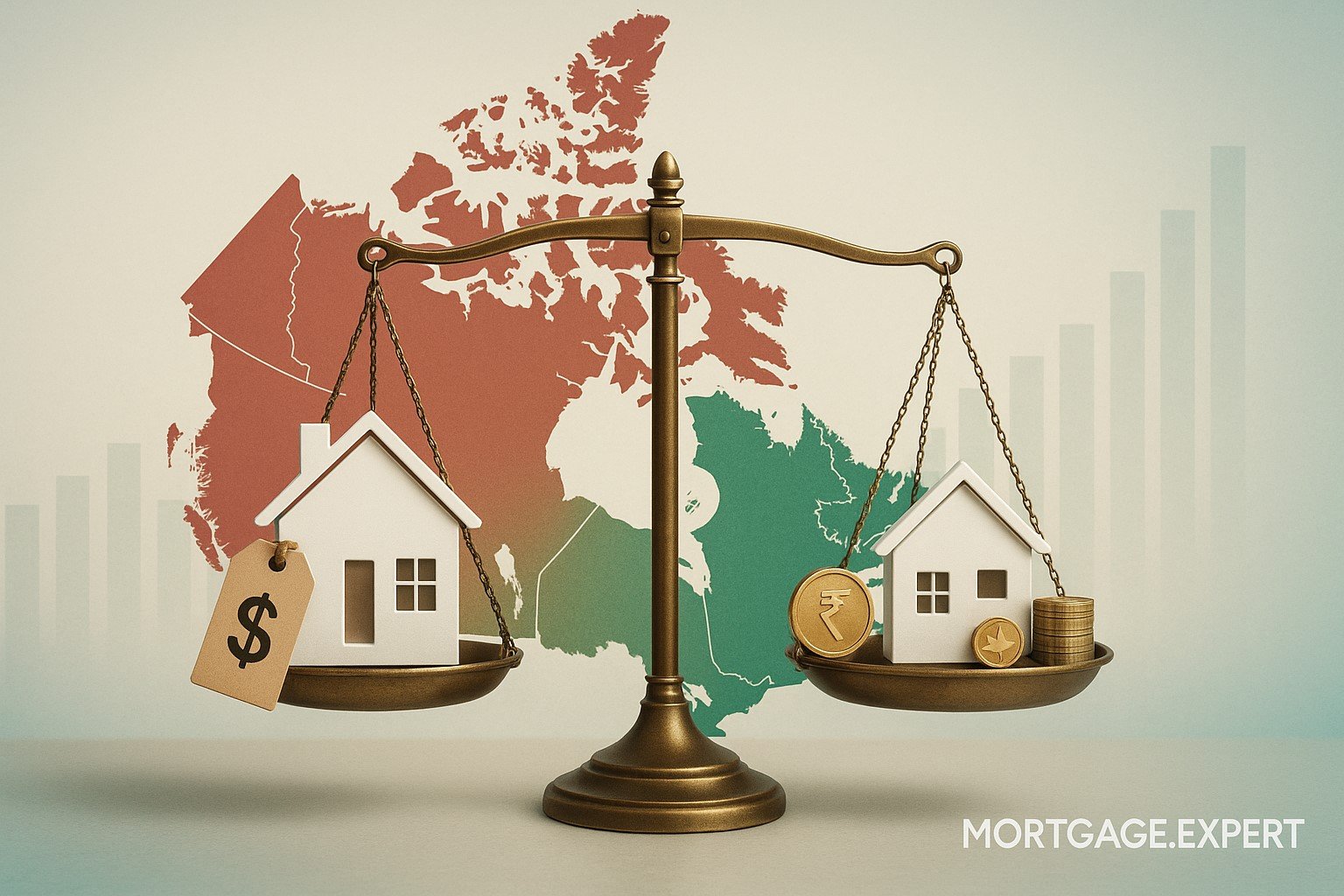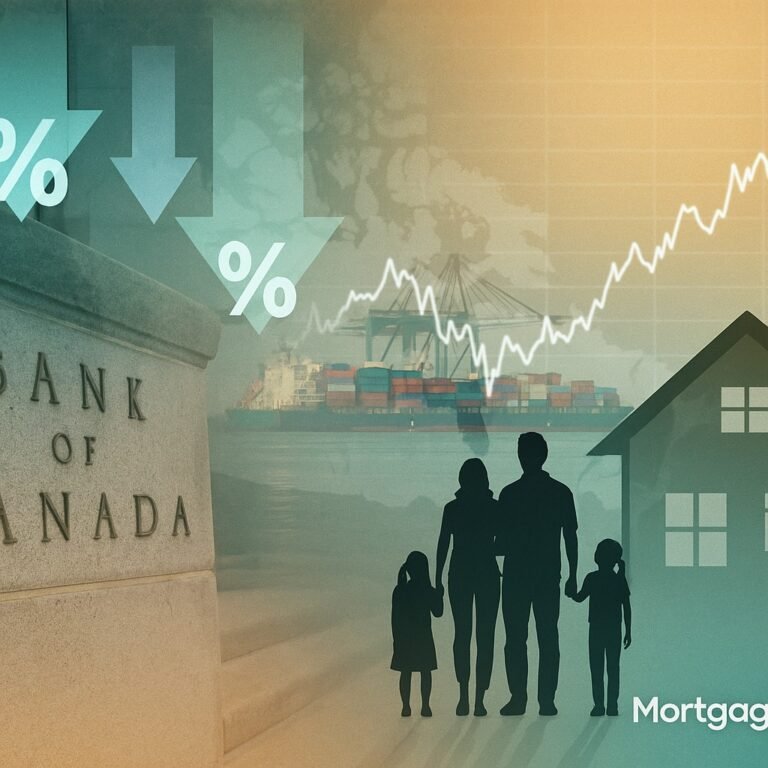
Canadian Home Affordability Shows Progress, But Regional Gaps Persist
Canada’s PBO says home affordability is improving in 2025 thanks to easing mortgage debt ratios. But stark differences remain: Halifax struggles with a 74% gap while Edmonton buyers see just 4%. Location continues to define how affordable mortgages feel.
Ottawa | Oct 8, 2025, 11:00 IST — A new report from the Parliamentary Budget Officer (PBO) suggests Canadian households are finally seeing relief in housing affordability after years of rising mortgage costs. But while the national picture shows progress, the reality on the ground is much more uneven: some cities are still grappling with deep affordability crises while others appear relatively balanced.
PBO Report: Signs of Relief
The PBO, an independent watchdog that reviews Canada’s fiscal and economic trends, analyzed mortgage debt service ratios (DSRs) — the share of household income that goes toward paying the mortgage. In the first half of 2025, these ratios have begun to decline, signaling that housing affordability has modestly improved compared to the 2022–23 period when borrowing costs were at their peak.
This improvement reflects a combination of factors:
- Bond yields have softened in recent months, lowering the cost of fixed-rate mortgages.
- Market expectations of Bank of Canada rate cuts have supported lower variable mortgage rates.
- Household income growth has somewhat closed the gap against still-high home prices.
The PBO characterized this as “significant progress,” though it was careful to note that affordability remains far from where it was a decade ago.
Uneven Story Across Canadian Cities
The averages hide dramatic differences across regions.
- Halifax: The report highlighted Halifax as having one of the worst affordability gaps in the country, estimated at nearly 74 %. This means that, even with income growth, the average household can only afford a fraction of typical mortgage payments. Rising in-migration and constrained supply have kept prices elevated despite softer national trends.
- Toronto & Vancouver: Canada’s largest markets have seen some improvement in debt service ratios, but they remain deeply unaffordable to median-income households. Average home prices in Toronto, for example, still hover around C$970,000, requiring incomes well above the national average to comfortably service a mortgage.
- Edmonton: In contrast, Edmonton has one of the smallest gaps in Canada — just 4 %. With average home prices far below those of Toronto or Vancouver, households in Alberta’s capital city are able to cover mortgage payments with incomes close to the national median.
- Prairie & Smaller Cities: The report also suggests that Saskatoon, Regina, and Winnipeg are more balanced, while parts of Atlantic Canada other than Halifax face affordability strains due to local wage levels and limited housing supply.
Why This Matters for Buyers
For households considering buying a home or refinancing, the PBO’s findings highlight just how much location matters in Canada’s housing market.
A couple earning C$110,000 in Edmonton could find themselves in a position to comfortably purchase a detached home, while the same couple in Halifax might struggle to afford even a modest townhouse. In Toronto or Vancouver, they may be priced out of ownership entirely.
Mortgage brokers say this disparity is increasingly shaping client conversations. “We’re seeing younger families looking beyond Ontario and B.C.,” said one Ontario-based broker, “because even with rate relief, incomes aren’t catching up to house prices in those provinces.”
Impact of Expected Rate Cuts
The affordability conversation is closely tied to interest rate policy. The Bank of Canada has kept its overnight rate elevated through much of 2024 and 2025 to contain inflation, but with price pressures easing, economists expect two quarter-point rate cuts before the end of 2025.
Each 25-basis-point cut could lower monthly payments on a C$500,000 mortgage by about C$70–C$80. For households in stretched markets like Toronto or Halifax, this relief could be meaningful but not transformative. For buyers in Edmonton or Winnipeg, however, the cuts could significantly improve borrowing power.
If bond yields continue to ease in parallel, fixed-rate mortgages may also become cheaper, further supporting affordability.
Long-Term Affordability Challenges
Despite the positive momentum, structural challenges remain:
- Supply constraints: Especially acute in cities like Vancouver, Toronto, and Halifax, where demand growth outpaces new construction.
- Population growth: Canada’s immigration-driven population expansion continues to add demand pressure, particularly in major urban hubs.
- Income disparities: Wage growth has lagged housing cost increases for nearly a decade, limiting the impact of interest rate relief.
The PBO emphasized that affordability, while improving, is still nowhere near historic averages when mortgage payments typically consumed around 25–30 % of household income.
What It Means for Lenders and Policymakers
For lenders, the report underscores the need to price risk carefully across regions. Mortgage underwriting that works in Alberta may not reflect the risks borrowers face in Nova Scotia or Ontario.
For policymakers, the findings reinforce the importance of targeted housing supply initiatives, especially in markets where affordability gaps remain wide. National averages may improve, but local market realities still dictate whether families can realistically enter homeownership.
Outlook
As 2025 progresses, Canadians can expect:
- Rate relief from the Bank of Canada that should modestly improve affordability.
- Regional divergence to continue — some cities stabilizing, others still under severe strain.
- First-time buyers to increasingly look at secondary markets where affordability gaps are smallest.
For households planning to buy, refinance, or renew in the coming months, the key takeaway is that affordability is improving, but the Canadian housing market remains a tale of two countries — one where mortgage payments are manageable, and another where they remain out of reach.
Thinking About Buying or Refinancing?
Affordability may be shifting in your city. Get expert advice on how these changes affect your mortgage options.
Talk to a Mortgage ExpertStuck with a Mortgage Decision?
Don’t stress — our team is here to help. Reach out for free, no-obligation guidance.
Contact the Experts



